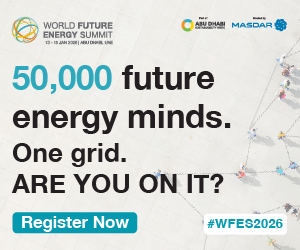Post - Blog
Coming clean on the cost of energy transition
- 3 years ago (2022-05-08)
- Junior Isles

By Dr Vincent Thornley, Managing Director, Fundamentals

WFES 2026 (World Future Energy Summit)
Rising gas and oil prices are pushing average energy bills to record highs and Ofgem’s latest review raised the price cap by 54%. As a result, dual fuel bills are estimated to increase to a record £1,971 from April 2022 and Cornwall Insight has recently warned that the cap could climb by another £600 by the end of the year as volatility in the energy market drives prices even higher. The UK is facing a trilemma – how can it balance energy security with sustainability and cost?
The British Government has outlined its plans for building a power supply that is affordable, clean and secure. At the heart of its proposals are embracing renewable forms of energy, such as, wind and solar power. However, embracing new forms of energy requires careful consideration. Both around the underlying infrastructure that will make clean energy a reality and the cost that the transition will require.
Starting an honest conversation
As a starting point, it’s time for the industry to be more transparent about the costs involved in managing the switch to clean energy and where the money is going.
For example, how many people know that energy itself accounts for around a third of their electricity bills ? This is followed by network costs - everything from the wires to the cables, substations and other assets or personnel that deliver power. The remainder of energy bills goes towards operating, environmental, social obligation, innovation, and other costs.
Changing conceptions
In the move towards clean energy, there needs to be an honest conversation with cost conscious customers, members of the industry, politicians, and pundits, about what needs to be done and the price we will all have to pay for achieving a net carbon zero future. Along the way, some popular myths may need busting and robust evidence presented for where and why money is being spent.
Let's look at the notion that wind and solar power (WASP) solutions are unaffordable alternatives to gas. This is an assumption that has already been blown out of the water by the Department for Business, Energy and Industrial Strategy (BEIS) Electricity Generation Costs (2020) report . Analysis of the report by Carbon Brief shows large WASP installations are already able to operate subsidy-free and will generate electricity at a fraction of the cost of gas by 2025.
Whole system costs & benefits
BEIS’s projections are based on ‘levelised costs’ – the whole life costs of building, operating and decommissioning plant. It also looks at ‘enhanced levelised costs’. That is whole system costs – including financial implications across the electricity industry in total. And, this is where things get interesting.
Increasing WASP generation could lower the wholesale price of electricity in the medium term. It is certain that ramping up WASPs will present enormous challenges - and major opportunities - for the distribution sector. Adapting distribution grids for a net zero carbon future will incur costs of investment and innovation. While the question of capacity and how to respond to the unexpected loss of large traditional generation sources still needs to be addressed. However, it must also factor in potential benefits for customers and the environment.
The bottom line
Ultimately, there is no single technological solution to achieving the energy security strategy. Handling more variable renewable energy sources will require a combination of technologies to increase network flexibility, together with network reinforcement that is based on industry-wide modelling of different scenarios.
At the same time, the future of the electricity industry is difficult to map with complete certainty. But, alongside the challenges are many exciting opportunities for innovation and intelligent investment. What’s needed now is more careful consideration around the underlying infrastructure that will support the energy transition and the mechanisms that can be used to pay for it. Whether through customer bills, general taxation or government borrowing, there are some big decisions that need to be made on how to fund the transformation. Another balancing act.
Ofgem and the industry need to take a whole-system view of what needs to be done and how much it will cost. It then needs to communicate directly to customers, spelling out where the money is coming from, where it is going and what they (and the environment) are getting for it. Only then is it possible to take our ultimate stakeholders along with us on the journey to net zero carbon and make the transition to clean energy a success.
